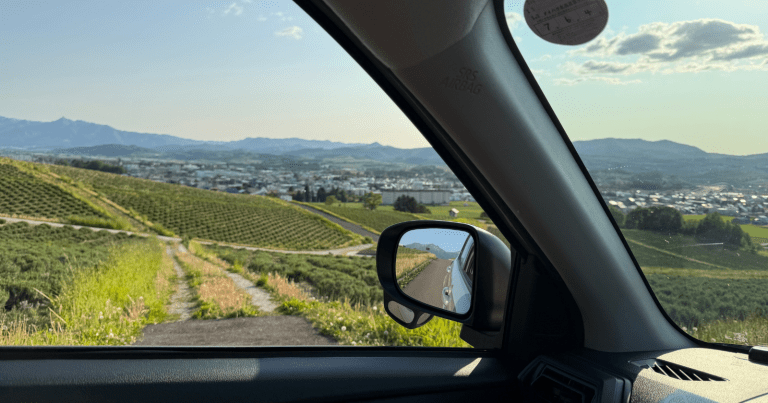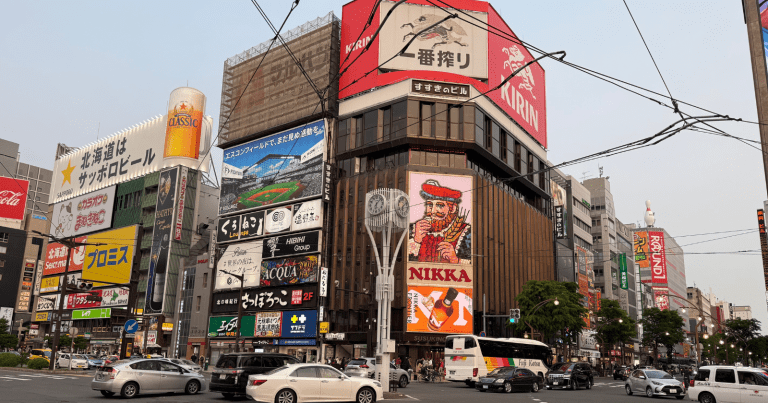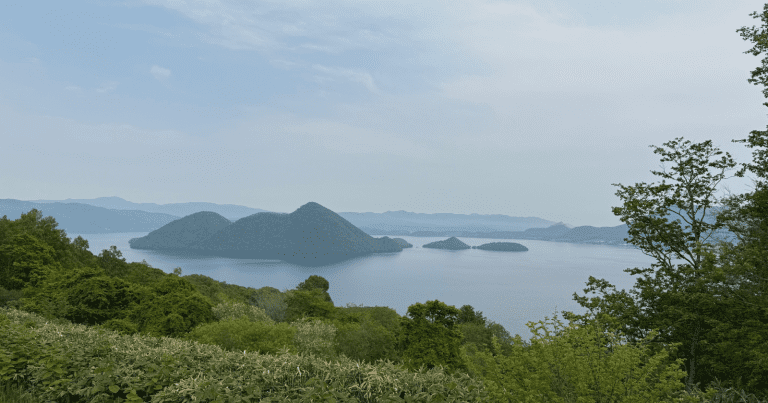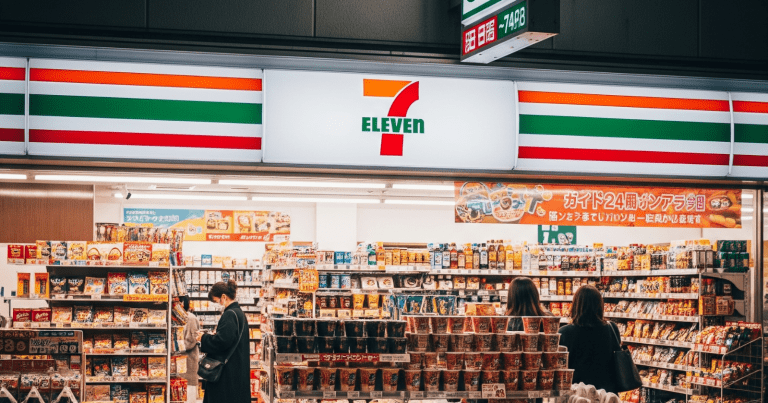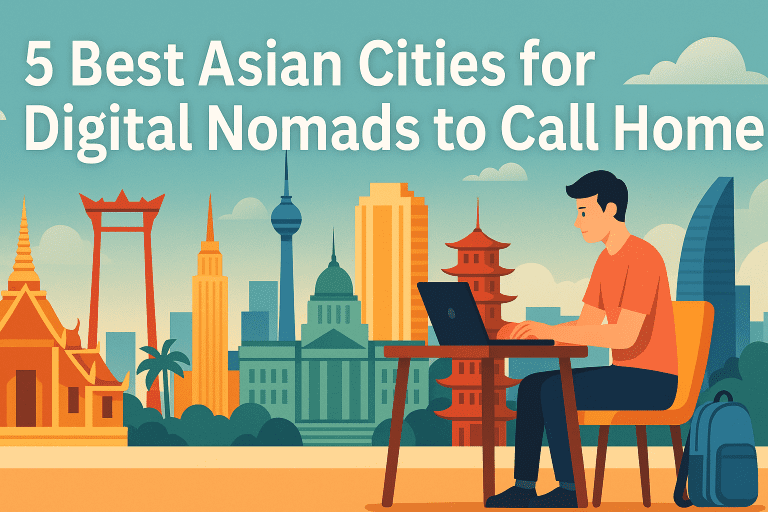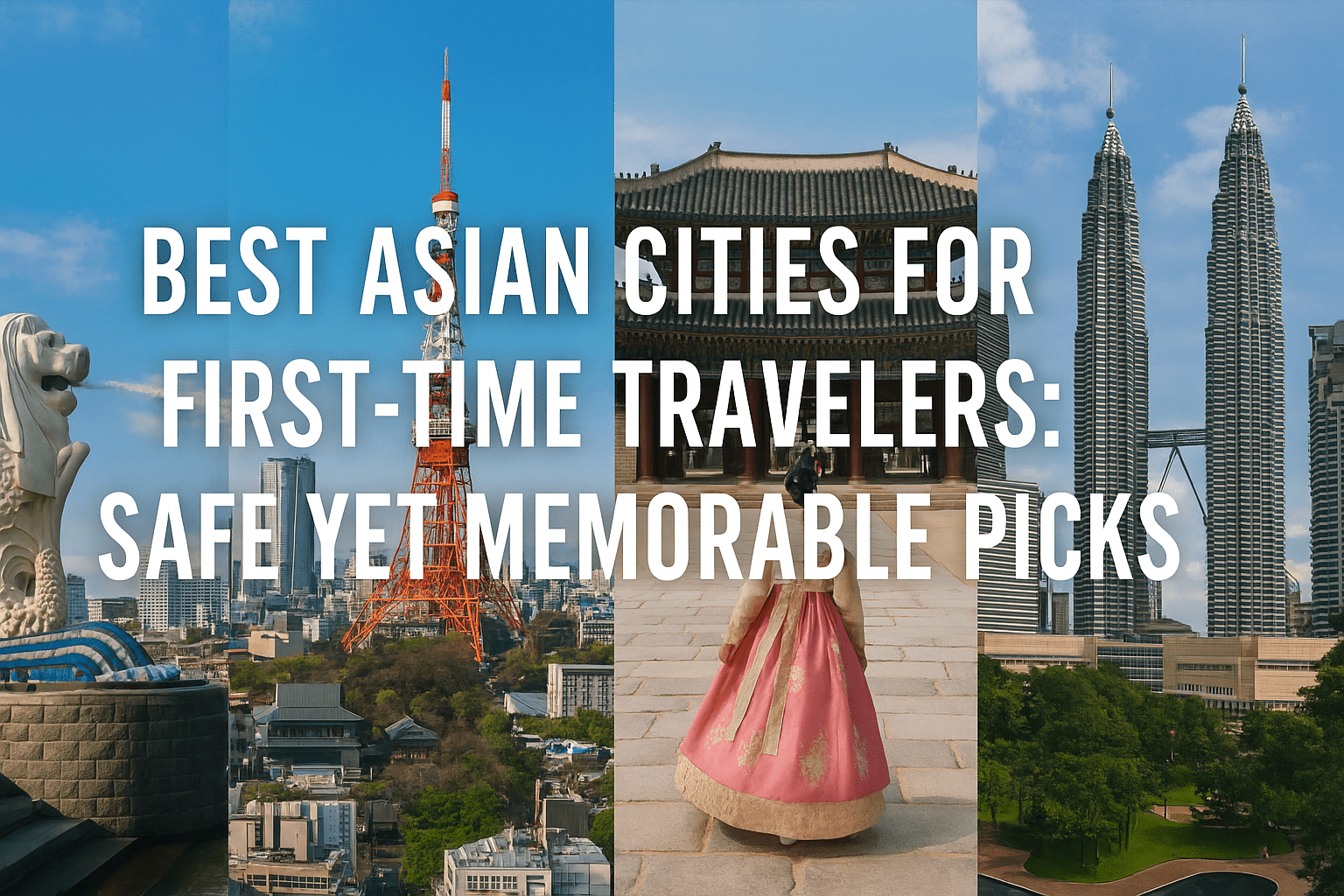
Heading to Asia for the first time is incredibly exciting, but let’s be honest, it can also feel a bit overwhelming. You’ve heard the stories, seen the bustling photos, and maybe you’re wondering: Where do I even start? Which cities offer that perfect mix of iconic Asian adventure without throwing you into the deep end right away?
Finding the safe memorable Asian cities first time travelers can confidently navigate is key to kicking off your adventure on the right foot. As someone who’s navigated these waters for years, I know the difference a well-chosen first stop makes. This article isn’t about selling you a postcard; it’s about equipping you with the practical, actionable insights you need to pick cities where you’ll feel secure, get around easily, and still have jaw-dropping experiences. We’ll cut through the noise and give you the insider scoop on cities that are genuinely great choices for beginners, helping you travel smarter, safer, and with zero regrets.
Core Tips for Picking Your First Asian City: Safety Meets Accessibility
Choosing your initial landing spot in Asia when you’re a first-timer requires more than just picking a famous name off a map. You need cities that offer a welcoming infrastructure, a high level of safety, and relative ease of navigation, even if you’re jet-lagged and bewildered. Think of it as selecting your training wheels before hitting the cycling marathon. Here’s how to approach it and some prime candidates.
Firstly, prioritize cities with established, efficient public transportation systems. Getting around shouldn’t be a puzzle you have to solve daily. Cities with extensive metro or rail networks where signage includes English are huge wins. This dramatically reduces the chances of getting lost or falling victim to inflated taxi fares. Singapore and Tokyo are the gold standards here. Their transit systems are immaculate, punctual, and cover virtually everywhere you’ll want to go. Seoul also boasts an incredibly user-friendly subway.
Secondly, look at crime rates and overall safety profiles. While petty crime exists everywhere, some cities in Asia are genuinely among the safest globally. You want places where you can feel comfortable walking alone at night, where scams are less prevalent, and where the general atmosphere is one of order and respect for rules. Singapore consistently ranks as one of the safest cities in the world. Tokyo is famous for its low crime rate – seriously, people lose wallets and often get them back! Seoul also offers a very high level of personal safety.

Thirdly, consider the prevalence of English speakers, especially in tourist-facing roles. While you should absolutely learn a few basic phrases in the local language, encountering people who speak some English simplifies transactions, asking for directions, and handling unexpected situations. In cities like Singapore and Kuala Lumpur, English is widely spoken due to historical reasons and their status as international hubs. Major tourist areas in Tokyo and Seoul also have increasing numbers of English speakers and signage, though it can be more challenging outside these zones.
Based on these criteria, let’s look at some specific cities that are fantastic choices for first-time travelers focusing on safety and ease:
Singapore: This city-state is often called “Asia for beginners,” and for good reason. It’s spotlessly clean, incredibly safe, the public transport is world-class, and English is one of the official languages. You can navigate the entire island with ease, find amazing food court meals that are both cheap and hygienic, and experience a blend of cultures all in one place. While it can be slightly more expensive than other Southeast Asian destinations, the ease and safety it offers are invaluable for a first-timer. Don’t skip exploring its diverse neighborhoods or indulging in the Hawker centres.
Tokyo, Japan: A vibrant metropolis that can seem dauntingly large, Tokyo is surprisingly easy to navigate once you understand its incredible rail system (get a Suica or Pasmo card!). It’s extraordinarily safe, polite, and efficient. While the language barrier exists, signage on public transport is excellent, and locals are often eager to help, even if communication is via gestures or translation apps. Experiencing the blend of ancient traditions and futuristic technology here is unforgettable, and doing so feels incredibly secure. You can wander distinct districts like Shibuya, Shinjuku, or Asakusa and feel completely comfortable.
Seoul, South Korea: Another city with an amazing public transport system, Seoul is modern, dynamic, and very safe. The subway is extensive and easy to use, with clear English signs. From K-Pop to high fashion, the city offers endless exploration. Like Tokyo, it boasts a low crime rate. While Korean is the primary language, many younger people and those in tourist areas speak English. Getting around, finding fantastic food, and soaking in the unique culture is very manageable for beginners.
Kuala Lumpur, Malaysia: KL offers a slightly more ‘Southeast Asian’ feel than Singapore but still maintains good infrastructure and relatively high safety standards, especially in tourist areas. Public transport (LRT, monorail, buses) connects major sites reasonably well, though it’s not as comprehensive as Tokyo or Singapore. English is widely understood, making communication easier. It’s also significantly more budget-friendly than the previous three, allowing you to stretch your money further while still feeling safe and having plenty of memorable experiences, from the Petronas Towers to bustling markets.
I remember my very first time landing in a major Asian hub, fresh off a long flight. I thought I had everything planned, but I missed a crucial detail about the local train line closing earlier than expected. Stranded late at night in an unfamiliar part of town with limited local currency was definitely a mistake that taught me the importance of double-checking transport schedules and having a backup plan (like a reliable ride-sharing app or knowing local taxi norms) specifically for those first few hours when you’re most vulnerable and least oriented. Choosing a city known for reliable, late-running public transit would have saved me that particular headache!
“Travel is fatal to prejudice, bigotry, and narrow-mindedness, and many of our people need it sorely on these accounts.”
Advanced Navigation & Safety Hacks for First-Time City Explorers
Once you’ve chosen one of these excellent gateway cities, it’s time to enhance your safety and ease of travel with some more specific strategies. These tips go beyond basic common sense and leverage insider knowledge to help you blend in better and avoid potential issues.
First off, master the local public transport apps. Google Maps works well in many Asian cities for planning routes, but downloading the specific local transport app (like HyperDia or Jorudan in Japan, Naver Maps/Kakao Maps in South Korea, or the MRT/LRT apps in Singapore/KL) can offer real-time updates, station exits, and service alerts that generic apps might miss. Knowing exactly which exit to take from a massive metro station can save you a lot of disoriented wandering above ground, which in turn increases your feeling of safety and confidence.
Be aware of common tourist scams specific to the city. While the cities recommended are safer, no city is entirely free of opportunistic individuals. For example, in some places, meter tampering in taxis is a minor issue (less likely in Tokyo or Singapore, more possible elsewhere). Knowing standard fares or using reputable ride-sharing apps (Grab is dominant in Southeast Asia) eliminates this risk. In tourist heavy areas, politely but firmly decline unsolicited offers for tours, goods, or services. A simple “No, thank you” and walking away is usually sufficient.
Carry your valuables securely, but don’t be overly paranoid. While these cities are safe, keeping your passport, large sums of cash, and credit cards secure is always wise. Consider a money belt or a secure cross-body bag. However, flashing expensive jewelry or electronics can still draw unwanted attention anywhere in the world. Blend in by dressing modestly and paying attention to your surroundings, just as you would in any major city back home. In incredibly safe places like Tokyo or Singapore, you might see locals leaving phones on cafe tables, but as a tourist, it’s still best practice to keep your belongings close.
Understand local communication methods. While English signage is improving, having a way to bridge the language gap is invaluable. Downloading offline translation apps (like Google Translate) is essential. Even better, consider getting a local SIM card or an eSIM upon arrival. This allows you to use mapping apps, translation apps, and contact your accommodation or emergency services if needed. Having data connectivity is a significant boost to safety and convenience, allowing you to verify information on the spot rather than relying solely on potentially outdated guidebooks or memory.
Finally, understand the cultural nuances around interaction, especially late at night. While you can walk safely in many areas of Tokyo, Seoul, or Singapore at night, knowing which districts are primarily entertainment zones and might attract a rowdier crowd (like some parts of Shinjuku in Tokyo, or Clarke Quay in Singapore) is helpful. Stick to well-lit, busy streets if you’re out late. Trust your gut feeling – if a situation or area feels off, remove yourself from it. These cities are generally very respectful, but being aware of your surroundings is always the best defense.
Niche Tips & Resources for Enhanced Safety and Enjoyment
Taking your first Asian trip from simply safe to truly savvy involves tapping into specific resources and applying more refined tactics. These tips focus on maximizing your positive experiences while minimizing potential downsides, even in cities known for their safety.
Where you stay matters, especially for first-timers. Look for accommodation (hotels, hostels, guesthouses) that are located very close to public transport hubs. Being within a 5-10 minute walk of a major metro or train station means you spend less time transiting from your accommodation to the transit system itself, reducing potential navigation stress or late-night walks through unfamiliar areas. Research neighborhoods known for safety and convenience for tourists – for example, Shinjuku or Shibuya in Tokyo offer amazing connectivity and safety, while Bugis or the CBD area in Singapore are similarly well-situated. Check recent traveler reviews specifically mentioning safety and location convenience.
Leverage technology beyond mapping. Install a local ride-sharing app like Grab (Southeast Asia) or Kakao T (South Korea) even if you plan to use public transport primarily. They are excellent backups if you’re out late, in an area with limited transit options, or simply prefer the convenience. They also offer transparent pricing, avoiding potential taxi fare issues. Additionally, having access to these apps means you can easily call a ride if you feel uncomfortable in a situation.
Know how to access local emergency services. While you hope you won’t need them, having the local emergency number (like 999 in Singapore and Malaysia, 110/119 in Japan, 112 in South Korea) saved in your phone is critical. Also, know the address and contact information for your country’s embassy or consulate in the city you are visiting. They can provide assistance in case of emergencies like lost passports or significant issues.
For getting the most current, granular information on city-specific safety or transport updates, connect with recent travelers. Online forums like Reddit’s r/travel or subreddits specific to the city you are visiting (e.g., r/Tokyo, r/Singapore) are goldmines of up-to-date information shared by people currently on the ground or who have just visited. Search for recent threads on safety, transport strikes, or specific neighborhood tips. This is often more current than guidebooks.
Packing smart contributes to safety. A small, lightweight daypack is essential for carrying daily necessities, but make sure it has secure zippers. Consider using smaller pouches or organizers inside to keep valuables less accessible to pickpockets (again, less of a concern in hyper-safe cities, but good habit). A portable power bank is invaluable for keeping your phone charged, ensuring you can always access maps, translation, or communication apps.
Finally, embrace the local culture in a respectful way. Learning a few basic phrases (“Hello,” “Thank you,” “Excuse me”) goes a long way in positive interactions. Understanding simple etiquette, like taking off your shoes indoors in Japan or not pointing with your feet in Thailand (though less relevant for city safety, contributes to a harmonious visit), can prevent misunderstandings. The safer cities on this list generally have locals accustomed to international visitors, but showing respect for their norms is always appreciated and can lead to more positive, memorable interactions. Many first-time visitors looking for safe and budget-friendly options find these cities offer an excellent balance.
“The world is a book and those who do not travel read only one page.”
These strategies aren’t about being fearful; they’re about being prepared and confident. By choosing cities known for their safety and infrastructure and applying these practical tips, you position yourself to have an incredibly smooth and rewarding first experience in Asia.
Conclusion: Your Safe & Memorable Asian Adventure Awaits
Taking the leap to visit Asia for the first time is a huge step, and choosing the right city to start your journey makes all the difference. Focusing on destinations known for their safety, efficient transport, and ease of navigation like Singapore, Tokyo, Seoul, or even Kuala Lumpur provides the perfect foundation for a fantastic trip. Remember the core advice: leverage reliable public transport, stay aware of your surroundings while recognizing the genuinely low risks in these cities, and use technology smartly for navigation and communication.
The most impactful takeaway? Preparation breeds confidence. By understanding the unique advantages of these cities and applying practical strategies – from mastering local transit apps to knowing emergency contacts – you transform potential anxieties into empowerments. You’re not just visiting; you’re navigating like a savvy traveler from day one. Armed with this knowledge about safe memorable Asian cities first time around, you are ready to unlock incredible experiences, cultural immersion, and personal growth, all while feeling secure every step of the way. Go explore, be smart, and enjoy every moment.


